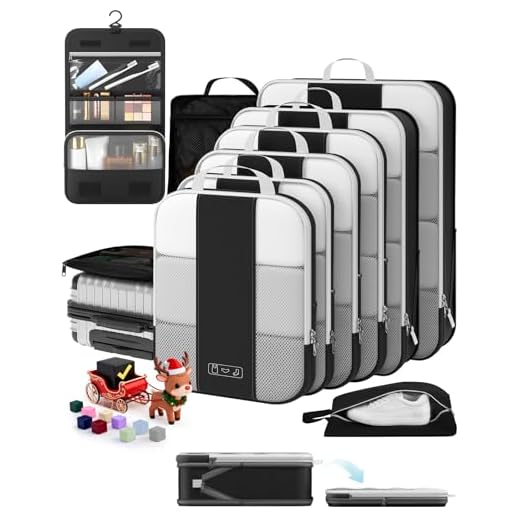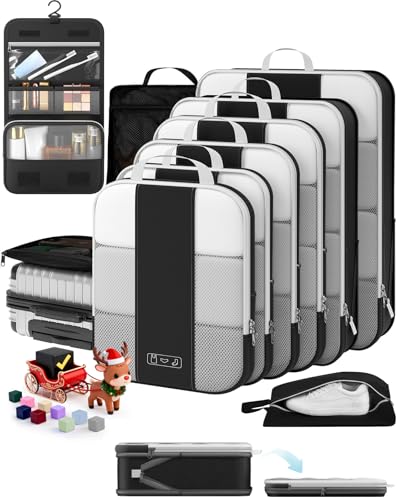



Before choosing your gear, evaluate the specific restrictions imposed by your selected vessel. Many tour operators have clear guidelines regarding the maximum permissible weight per individual bag, often ranging from 50 to 70 pounds. Ensure you familiarize yourself with these limits to avoid unexpected fees at check-in.
Utilize a reliable scale to check the weight of your bags. A digital scale is recommended for accuracy, allowing you to make adjustments as necessary. Packing in increments, such as focusing on one category at a time–clothing, toiletries, or accessories–facilitates efficient organization and minimizes the risk of exceeding weight limitations.
Prioritize multi-functional items that serve more than one purpose, such as a jacket that doubles as a raincoat or shoes suitable for both casual outings and dining. This strategy not only reduces the number of items but also helps manage the overall weight effortlessly.
Utilizing packing cubes can greatly enhance your ability to manage not only space but also weight distribution within your baggage. Systematically compressing clothing items can create a streamlined packing experience. Aim to fill all nooks and crannies within your bags, ensuring every available space contributes to your preparations.
Finally, consider leaving behind bulky items, as onboard amenities often provide alternatives. This minimalist approach, combined with advanced planning, guarantees your essentials stay within the desired weight range while maximizing comfort during your adventure.
Accurate Measurement for Your Bags
Invest in a sturdy digital scale designed for suitcases. Ensure it can handle the weight requirements outlined by your chosen cruise line, often ranging from 50 to 70 pounds per bag.
Techniques to Ensure Accuracy
Consider measuring while the bag is empty first. Then, pack as you normally would, repeatedly checking the weight. Doing this prevents last-minute surprises. If using a handheld scale, ensure to lift the bag steadily to avoid fluctuations in readings.
Weight Distribution Tips
Strategically distribute heavier items towards the bottom of your bags. Use packing cubes for organization and to help maintain manageable weights. Keep necessary items, like medications and essentials, easily accessible without exceeding limitations.
Choosing the Right Scale for Your Luggage
Select a scale that accurately meets your needs while being portable. Digital options often provide precise readings and are easier to read compared to mechanical types. Look for features like a tare function, which allows you to weigh items without the container.
Types of Scales
Consider the following types:
| Type | Advantages | Disadvantages |
|---|---|---|
| Digital Scale | High accuracy, easy to read, often lightweight | May require batteries |
| Mechanical Scale | No batteries needed, often more affordable | Can be less accurate, harder to read |
| Bag Scale (Strap) | Compact, easy to use on larger items | Readings may vary based on how the item is held |
Capacity and Portability
Ensure the scale has an appropriate weight limit for your bags, typically between 50-110 pounds. A lightweight, compact design enhances portability, making it easy to carry along on your travels. Opt for models with a built-in handle or hook for effortless use.
Understanding Cruise Line Weight Restrictions
Familiarize yourself with the specific limitations set by various cruise companies. Each line has different policies regarding the maximum allowable weight per bag and the total number of pieces permitted. Commonly, the weight limit per bag ranges from 50 to 70 pounds, but exceptions may apply; always check your cruise line’s guidelines well in advance.
Most cruise operators also place restrictions on the total number of bags. Typically, travelers are allowed between two to four pieces, but some lines might permit more or less. Pay close attention to these details to avoid surprises at check-in.
- Consult the cruise line’s website or customer service for specific baggage rules.
- Be aware of any additional fees for overweight or extra items.
- Consider the type of cruise; luxury lines may offer more leniency compared to budget options.
For specific items such as sports equipment, the regulations can be different. If planning to bring onboard such gear, clarify the weight limits in advance.
In certain cases, special provisions exist for passengers with mobility issues or those in need of additional assistance. Check if your cruise line offers any exemptions or additional allowances.
Stay informed about health and safety protocols regarding the transport of items, especially during unique circumstances. On occasions, some items you normally carry may be restricted; for instance, high-pressure containers or certain electronics.
For travelers with pets, it is crucial to check the individual policies and any associated weight allowances. Additionally, find out how to clean cat pee from clothes if accidents happen during your trip.
Lastly, always pack intelligently with future excursions in mind; lightweight, versatile clothing can significantly decrease overall weight while maximizing outfit options.
Step-by-Step Guide to Weighing Your Luggage
Begin with gathering all items you plan to take with you. Lay them out on a flat surface to ensure nothing is missed. This will help you visualize what you need and help avoid unnecessary packing.
Next, find a reliable device to measure weight. Options include digital scales or balance scales, which provide accurate readings. If you need assistance, consider investing in the best commercial backpack blowers, designed for convenience and ease of use.
Weigh each packed bag individually. If your scale only measures in pounds, convert to kilograms if needed. This is especially useful for compliance with different regulations.
After weighing, check your cruise line’s limits regarding mass allowances. Remember to account for any souvenirs or additional items you may acquire during the trip.
For optimal organization, consider using packing cubes. They not only save space but also make it easier to manage weight distribution across bags. Additionally, you may want to explore best molle backpack attachments to maximize your packing efficiency.
Lastly, double-check your scales before the final weigh-in. A quick recalibration ensures accuracy. Once confirmed, you’re ready to enjoy your getaway without concerns about exceeding weight limits.
Common Mistakes When Weighing Luggage
Selecting an inappropriate scale often leads to inaccuracies. Consider using a device specifically designed for checking baggage, as household scales may not provide reliable readings.
Neglecting to remove all items from your suitcase can result in excess weight. Ensure pockets and compartments are empty before taking measurements.
Failing to account for the weight of accessories can breach limits. Items like bags, straps, and travel pillows should be included in your total.
Not calibrating the scale before use may yield incorrect results. Regularly check that your device is set to zero to ensure precision.
Assuming that weight discrepancies between different scales are negligible can be problematic. Always verify with the scale used by the cruise line to avoid surprises.
Rushing through the process might lead to missed items. Take your time to ensure nothing is overlooked.
Using bags that are not designed for travel can result in unexpected weight. Ensure your containers are lightweight to maximize your allowable limit.
Overpacking can lead to excessive baggage. Assess necessary items critically to avoid unnecessary weight and extra fees.
Tips for Managing Excess Weight on Your Cruise
Consider redistributing items among travel companions. Sharing heavy items, like shoes or toiletries, can significantly cut down on individual baggage weight.
Utilize Onboard Services
Many vessels offer laundry services. Pack fewer clothing items and plan to wash them during your trip, reducing the burden from your packing.
Leave Non-Essentials Behind
Identify and remove items that won’t be used. Avoid taking multiple outfits for different settings; opt for versatile pieces that mix and match easily.
Check with ports of call regarding purchases. You might opt to buy items, such as sunscreen or beach gear, at your destination instead of packing them.
Consider lightweight alternatives for gadgets or equipment. Look for travel-friendly versions of electronics or equipment that won’t weigh down your items.
Pack travel-sized liquids. This approach not only saves weight but also often helps you comply with onboard regulations.
Invest in a high-quality, lightweight bag. A good design can reduce the total weight while giving you ample space for necessary belongings.







